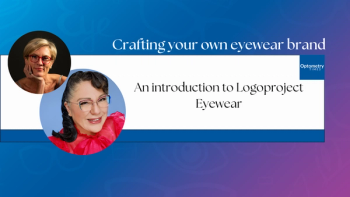
AAOpt 2022: Retinal imaging: Know how to optimize the technology in your practice
Brad Sutton, OD, FAAO, FORS, shares highlights from his discussion titled, "Retinal imaging grand rounds," which he co-presented during the 2022 American Academy of Optometry meeting.
Brad Sutton, OD, FAAO, FORS, associate professor at Marshall B. Ketchum University, speaks with Optometry Times®' Kassi Jackson on highlights from his discussion titled, "Retinal imaging grand rounds," which he co-presented during the 2022 American Academy of Optometry (AAOpt) annual meeting in San Diego.
Editor's note: This transcript has been edited for clarity.
Jackson:
Hi everyone. I'm Kassi Jackson with Optometry Times, and I'm joined today by Dr. Brad Sutton, clinical professor at Indiana University School of Optometry and service chief of the Indianapolis Eye Care Center. Dr. Sutton is here to share highlights from his discussion titled, "Retinal imaging grand rounds," which he is co-presenting during the 2022 American Academy of Optometry meeting this year in San Diego. Dr. Sutton tell us about the talk.
Sutton:
Hey, thanks for having me, I appreciate the opportunity. Yeah, my colleagues here at IU—Dr. Larissa Krenk and Dr. Anna Bedwell—and I will be covering all types of different retinal imaging and how we use those imaging modalities to better serve our patients in clinic. We're going to talk about OCT, OCTA, a little bit about fluorescein angiography, and fundus autofluorescence, so we're going to cover a lot of the main different imaging types that we use to better serve our patients both diagnostically and monitoring therapeutic effect.
Jackson:
Why is this important to discuss as optometrists?
Sutton:
Yeah, I think it's really important that if we have a machine in our office, we best know how to utilize that machine. And we know what it can do for us, we know what conditions it's very helpful in analyzing or following or monitoring; it's always important that we get the most out of that technology to enable us to care for our patients at the highest level possible.
Jackson:
Yeah. And so what does that understanding mean for patient care?
Sutton:
Yeah, really. I mean, it goes a long way to helping us get patients put in the box that they're in, right. And so we get the diagnosis better, you know, more quickly, we get the diagnosis more accurately, when we can use this technology to say, okay, yeah, these two or three conditions may look similar, but because of what the fundus autofluorescence shows here, because of what the octa shows here. I know it's this condition, not that condition that is allowed allows us to better care for the patients from early on in the process.
Jackson:
And what is the take home message you and your co-presenters hope people take away from the talk?
Sutton:
I think the biggest take home message will be: if you're gonna have these instruments and use them in clinic, make sure you use them to the highest of your capabilities. Make sure you know as much as you can about what they're capable of doing so that you use them to better serve your patients needs.
Jackson:
Wonderful. Well, Dr. Sutton, thank you so much for your time today.
Sutton:
Anytime. Thank you.
Newsletter
Want more insights like this? Subscribe to Optometry Times and get clinical pearls and practice tips delivered straight to your inbox.












































.png)


